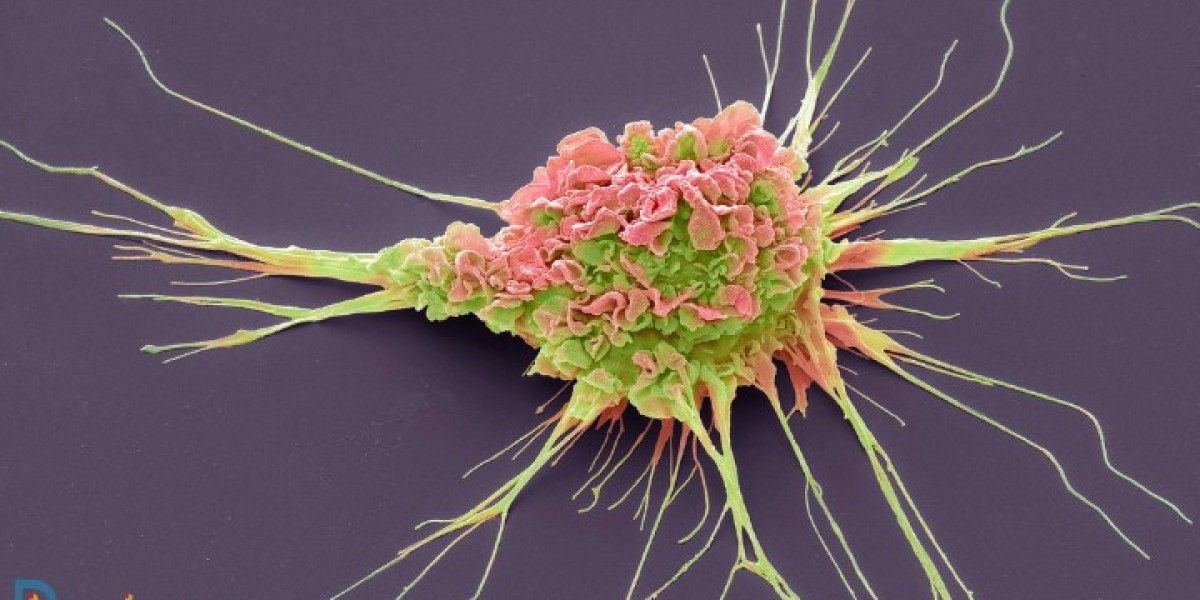The Current Standard of Care
For years, the treatment of HR-positive/HER2-negative breast cancer has revolved around hormonal therapies aimed at blocking or reducing estrogen’s effect on tumor growth. The mainstays of treatment include:
Tamoxifen: A selective estrogen receptor modulator (SERM) used to block estrogen in both pre- and post-menopausal women.
Aromatase Inhibitors: Drugs like letrozole, anastrozole, and exemestane that inhibit the enzyme aromatase, lowering estrogen levels in postmenopausal women.
Fulvestrant: A selective estrogen receptor degrader (SERD) that inhibits estrogen activity by degrading its receptor.
While effective for many, a considerable number of patients experience recurrence or disease progression, necessitating more innovative solutions to combat resistance.
Emerging Therapies on the Horizon
1. CDK4/6 Inhibitors: A Game-Changer in Advanced Disease
Examples: Palbociclib, Ribociclib, Abemaciclib.
Role: These drugs inhibit cyclin-dependent kinases 4 and 6, which play a key role in cell division and tumor proliferation. When added to endocrine therapy, CDK4/6 inhibitors have been shown to significantly improve progression-free survival in patients with advanced HR-positive/HER2-negative breast cancer. Their success has revolutionized the treatment landscape, making them a standard part of care for metastatic cases.
What’s Next: Ongoing research is exploring their role in earlier-stage disease, as well as in combination with other novel agents to prevent resistance.
2. PI3K Inhibitors: Targeting Genetic Mutations
Example: Alpelisib.
Role: Mutations in the PIK3CA gene, which is involved in cell growth and metabolism, are present in around 40% of HR-positive/HER2-negative breast cancers. Alpelisib is the first PI3K inhibitor approved for use in combination with fulvestrant in patients with PIK3CA-mutated tumors. This targeted approach helps to curb cancer growth by inhibiting the PI3K pathway, which is often overactive in these cancers.
What’s Next: Expanding the use of PI3K inhibitors to broader patient populations, as well as exploring next-generation PI3K inhibitors with improved safety profiles.
3. Next-Generation SERDs (Selective Estrogen Receptor Degraders)
Example: Elacestrant.
Role: Unlike fulvestrant, which requires intramuscular administration, newer oral SERDs like elacestrant are more convenient for patients. These next-generation SERDs are designed to be more potent in degrading estrogen receptors, offering a promising alternative for patients who develop resistance to standard hormonal therapies.
What’s Next: Clinical trials are ongoing to evaluate the efficacy of these drugs in both early-stage and metastatic HR-positive/HER2-negative breast cancer.
4. AKT Inhibitors
Example: Capivasertib.
Role: AKT inhibitors target the AKT protein, a key player in the PI3K/AKT/mTOR pathway involved in cell survival and resistance mechanisms. Capivasertib is currently being studied in combination with fulvestrant for patients with HR-positive/HER2-negative breast cancer who have progressed on prior therapies.
What’s Next: Further clinical trials are needed to establish AKT inhibitors as a potential treatment for resistant HR-positive/HER2-negative breast cancer.
5. Antibody-Drug Conjugates (ADCs)
Role: Antibody-drug conjugates are emerging as a new frontier in targeted therapy, delivering cytotoxic agents directly to cancer cells while sparing healthy tissue. Though more established in HER2-positive breast cancer, the use of ADCs is being investigated in HR-positive/HER2-negative subtypes, offering hope for patients with limited treatment options.
What’s Next: Development of ADCs specifically tailored for HR-positive breast cancer is a promising area of research.
6. Immunotherapy
Role: While immunotherapy has made a significant impact in the treatment of triple-negative and HER2-positive breast cancers, its role in HR-positive/HER2-negative breast cancer is less clear. However, combining immune checkpoint inhibitors with other therapies is being explored in clinical trials.
What’s Next: Further research is required to identify patient populations that may benefit from immunotherapy, particularly in combination with existing treatments.
Combination Therapies: The Next Frontier
Combination therapies are increasingly seen as the future of HR-positive/HER2-negative breast cancer treatment. By targeting multiple pathways at once, researchers hope to overcome resistance mechanisms and achieve more durable responses. The combination of CDK4/6 inhibitors with hormonal therapy is just the beginning, with numerous trials underway exploring combinations with PI3K inhibitors, mTOR inhibitors, and even immunotherapy.
Personalized Medicine and Biomarker-Driven Treatment
One of the most exciting developments in HR-positive/HER2-negative breast cancer is the shift towards personalized medicine. By identifying specific genetic mutations and biomarkers, such as PIK3CA or ESR1 mutations, doctors can tailor treatment to the individual characteristics of a patient’s tumor. This approach is expected to become increasingly important as more targeted therapies and companion diagnostics are developed.
Market Outlook: What Lies Ahead?
The HR-positive/HER2-negative breast cancer market is poised for significant growth, driven by several factors:
Increased Incidence: With breast cancer incidence rising globally, the demand for effective treatments will continue to grow.
Approval of New Therapies: The introduction of new targeted therapies, including CDK4/6 inhibitors, PI3K inhibitors, and next-generation SERDs, is expected to expand the treatment landscape and improve patient outcomes.
Emerging Markets: As awareness and access to advanced treatments improve in developing regions, the global HR-positive/HER2-negative breast cancer market is expected to experience substantial growth.
Conclusion: A Future of Hope and Innovation
The treatment landscape for HR-positive/HER2-negative breast cancer is evolving rapidly, with emerging therapies offering new hope for patients facing resistance to traditional hormonal therapies. With advancements in targeted therapies, combination approaches, and personalized medicine, the future looks promising. As research continues to unlock the complexities of this subtype, patients can look forward to more effective and tailored treatments that improve survival and quality of life.
Latest Reports
Head And Neck Squamous Cell Carcinoma Market | Radioligand Therapies Market | Surgical Site Infections Market | Wound Closure Devices Market | Biliary Atresia Market | Binge Eating Disorder Market | Bladder Cancer Market | Capnography Device Market | Cardiac Biomarkers Testing Devices Market | Central Venous Catheters Market | Epilepsy Market | Gaucher Disease Market | Generalized Pustular Psoriasis Market | Healthcare Due Diligence Services | Hemodynamic Monitoring Systems Market | Implantable Infusion Pumps Market | Neuromodulation Devices Market | Neurostimulation Devices Market | Neurotrophic Keratitis Market | Post Traumatic Stress Disorder Market | Post-bariatric Hypoglycemia Market | Absssi Market | Acute Gout Flare Market | Adrenoleukodystrophy Market | Adult Myopia Market | Alopecia Areata Market | Alpha-mannosidosis Market | Androgenetic Alopecia Market | Anemia In Ckd Market | Anterior Cruciate Ligament Injuries Market | Artificial Lung Devices Market | Automated External Defibrillators Market | Biochips Market | Cardiac Amyloidosis Market | Carpal Tunnel Syndrome Market | Centronuclear Myopathy Market | Chronic Rhinosinustis Market







